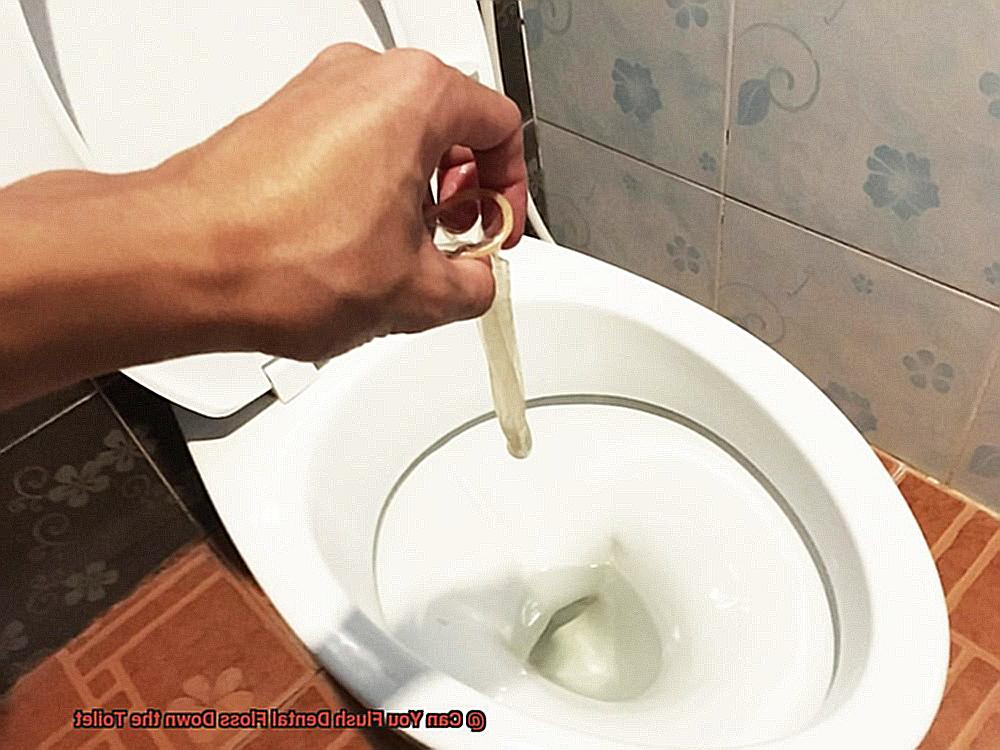Do you ever wonder what happens to your dental floss after you flush it down the toilet? If you’re one of the 27% of Americans who do, it’s time to learn about the potential consequences. While it may seem like a harmless action, flushing dental floss can cause serious clogs in your plumbing and sewer systems, leading to expensive repairs. And if that’s not enough, non-biodegradable items like dental floss can contribute to fatbergs – massive blockages that wreak havoc on wastewater systems and harm marine ecosystems.
But don’t worry – there are plenty of safe ways to dispose of dental floss. In this blog post, we’ll explore the reasons why flushing dental floss is a bad idea and provide tips for proper disposal. We’ll also take a closer look at different types of dental floss and their biodegradability, as well as eco-friendly alternatives that can help reduce waste.
So whether you’re a seasoned flosser or just curious about how everyday actions impact the environment, keep reading to discover the surprising truth about dental floss and its relationship with your toilet.
Contents
What is Dental Floss?
It’s a thin and flexible thread that is used to clean the tight spaces between our teeth. Although it may seem like a small step in your daily routine, flossing is vital to maintaining good oral hygiene and can make a significant difference in your overall oral health.
Dental floss is typically made of nylon or other synthetic materials and comes in an array of flavors such as mint, cinnamon, and even bacon. Yes, you read that right – bacon-flavored dental floss. You can also choose from waxed, unwaxed or fluoride-coated options to help prevent tooth decay.
Flossing is critical in removing plaque and food particles from between teeth where a toothbrush cannot reach. If left unchecked, these particles can accumulate and lead to gum disease, tooth decay, and bad breath. By incorporating regular flossing into your daily oral care routine, you can help prevent these issues.
Did you know that dental floss has been around for centuries? Evidence of this practice dates back to ancient civilizations such as the Greeks and the Romans. However, it wasn’t until the late 1800s that dental floss as we know it today was invented by Levi Spear Parmly, a New Orleans dentist.
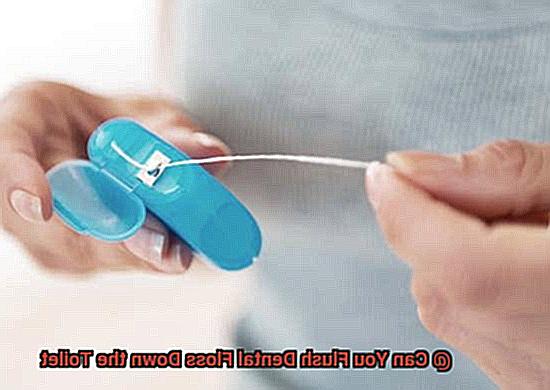
While silk thread was initially used to remove food particles, synthetic materials have since replaced silk due to cost and availability.
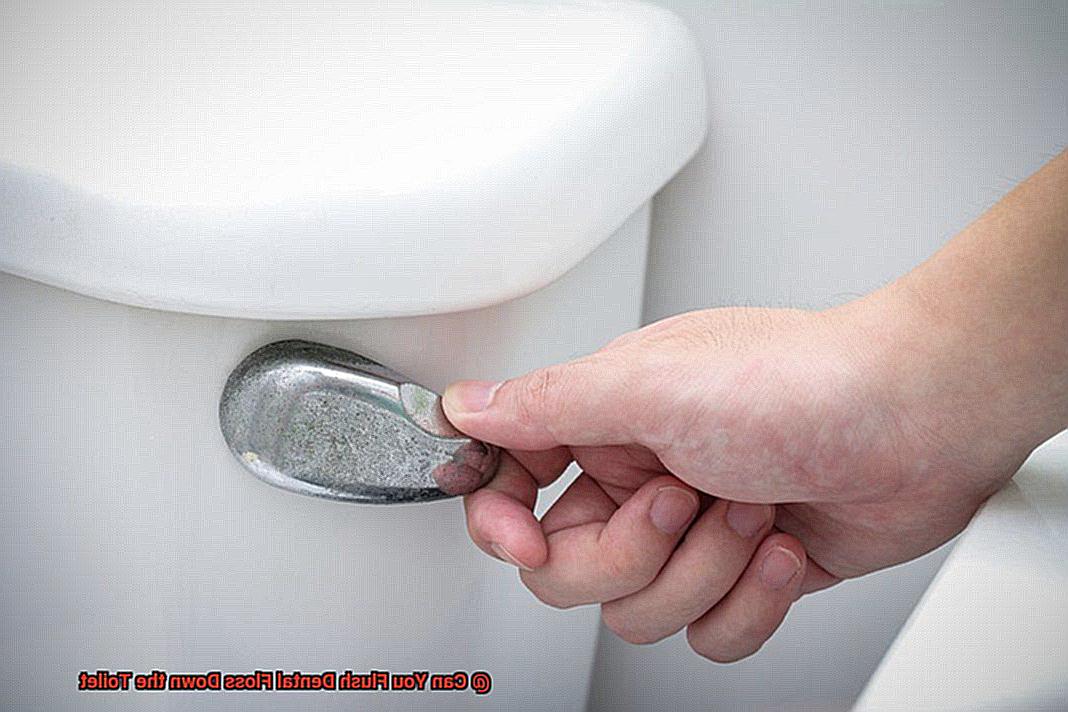
Now that we know what dental floss is and why it’s essential for our oral hygiene, let’s talk about proper disposal. Many people wonder if it’s safe to flush dental floss down the toilet.
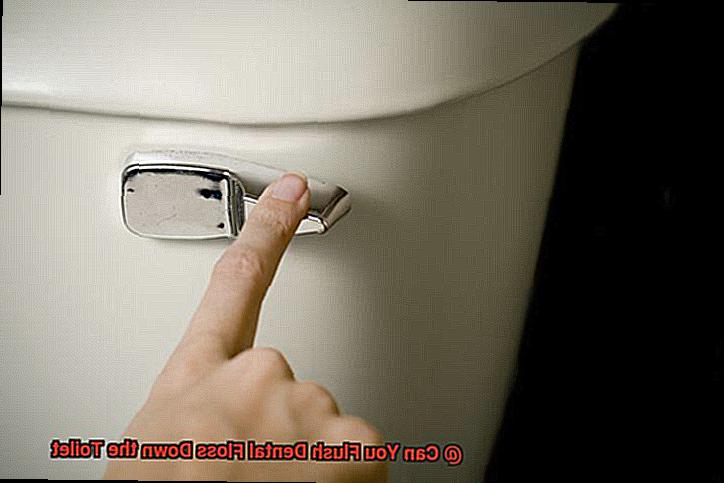
Unfortunately, the answer is no; you should not flush dental floss down the toilet. Dental floss is not biodegradable and can cause significant damage to your plumbing system and the environment. Instead, dispose of it in the trash along with other non-recyclable items.
Why Shouldn’t You Flush Dental Floss Down the Toilet?
Dental floss is a small, yet mighty tool that helps keep our teeth and gums healthy. However, its power does not extend to our plumbing or the environment when we flush it down the toilet. In fact, this seemingly harmless act can result in significant damage that can be avoided with proper disposal methods.
The synthetic materials that make up dental floss do not easily break down in water, which means that flushing it down the toilet can lead to blockages in our pipes and sewage systems. This can cause a tangled mess that leads to clogged toilets, slow draining sinks, and even sewage backups in your home. These issues are not just inconvenient and expensive to fix, but they can also pose health hazards as stagnant water attracts bacteria and other harmful substances.
But it’s not just our homes that are at risk when we flush dental floss down the toilet. When it ends up in our oceans and waterways, it can harm marine life and contribute to pollution. The synthetic material can be mistaken for food by marine animals, leading to internal injuries or even death. It’s a sobering thought that such a small act can have such a big impact on our planet.
Thankfully, there is an easy solution to this problem: proper disposal. Instead of flushing dental floss down the toilet, wrap it in tissue or paper and throw it in the trash. If you’re looking for an even more environmentally-friendly option, consider using biodegradable floss that breaks down quickly in water and won’t harm marine life.
The Impact of Flushing Dental Floss Down the Toilet
The main issue with flushing dental floss is that it doesn’t break down easily like toilet paper. Instead, it can get tangled with other debris in the pipes, forming a blockage that leads to serious plumbing problems such as overflowing toilets or backed-up drains. It’s not just your plumbing system that suffers; flushing dental floss can also harm the environment.
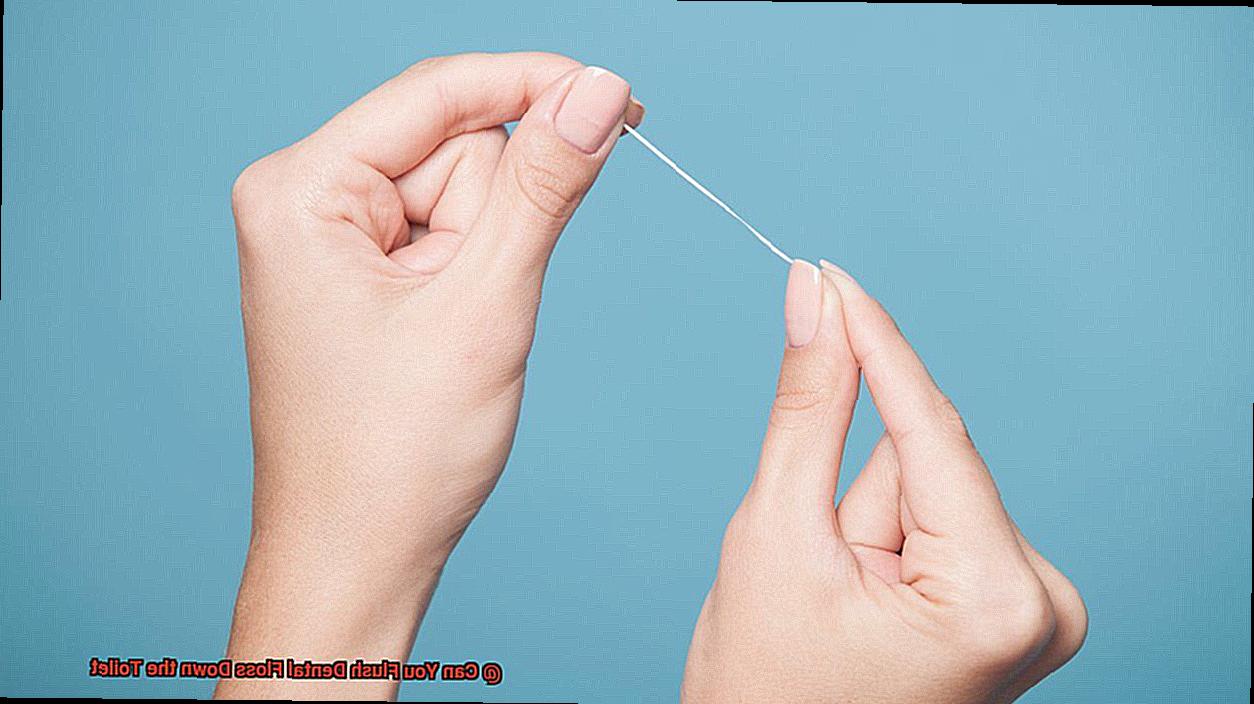
As dental floss travels through the sewage system, it can entangle with other debris and form large masses called “rag balls.” These rag balls can clog pumps and wastewater treatment systems, resulting in expensive repairs and potential environmental damage. Furthermore, dental floss is not biodegradable, meaning it doesn’t break down naturally in the environment. This can cause long-term pollution of our waterways and harm aquatic life.
Marine animals may mistake dental floss for food and ingest it, causing blockages in their digestive systems that can ultimately lead to death. So, what’s the solution? Properly dispose of dental floss in the trash bin instead of flushing it down the toilet.
How to Dispose of Dental Floss Properly
Did you know that dental floss is not biodegradable? That means it doesn’t break down naturally like other materials and can cause harm to our planet and wildlife. So let’s dive into the five subtopics to consider when disposing of dental floss.
Wrap it up
Before tossing used dental floss in the trash, wrap it around your fingers and cut it off with scissors. This simple step prevents it from getting tangled or caught in the garbage disposal or plumbing system, which can lead to costly repairs.
Go natural
Consider using biodegradable dental floss made from natural materials such as silk or bamboo. This type of floss will decompose over time and won’t harm the environment. Plus, it’s a great way to reduce your carbon footprint while keeping your teeth clean.
No littering allowed
When disposing of dental floss, always make sure to throw it in the trash bin and avoid accidentally littering. Leaving it lying around can attract harmful bacteria and other microorganisms that can lead to health risks.
Seal it up
If you have a large amount of dental floss to dispose of, such as after a dental procedure, place it in a sealable plastic bag and throw it away. This prevents loose floss from escaping and causing environmental damage.
Recycle if possible
Look for recycling programs that accept dental floss. Some eco-friendly companies have started accepting used dental floss for recycling, but these programs may not be widely available yet. It’s worth checking with your local recycling center or waste management company to see if they accept it.
In conclusion, proper disposal of dental floss is crucial for maintaining a healthy environment. Remember to throw it in the trash, wrap it up before tossing, use biodegradable options, avoid littering, seal it up if necessary, and recycle if possible. By following these simple steps, you can do your part to protect our planet and prevent plumbing issues.
Alternatives to Disposing of Dental Floss
Flushing dental floss down the toilet may seem like a convenient option, but it can cause serious plumbing problems and harm our planet. So, what are the alternatives to disposing of dental floss?
One option is to throw it in the trash, but this poses another problem as it may end up in landfills where it takes hundreds of years to decompose. A better alternative is to opt for eco-friendly dental floss brands that use biodegradable materials like silk or plant-based fibers. These types of floss can be composted, making them a more sustainable option.
Another way to reduce waste is by reusing dental floss. Yes, you read that right. You can sanitize and sterilize dental floss by boiling it in water for a few minutes or soaking it in hydrogen peroxide. This not only helps reduce waste, but also saves you money on buying new floss.
Lastly, consider using reusable interdental devices like interdental brushes or water flossers. These tools are designed to clean between teeth and gums just like traditional floss but can be used multiple times and are more environmentally friendly.
3CMhBN3sPrw” >
Conclusion
To sum it up, dental floss may seem like a small item, but it can have a big impact on our plumbing and the environment if not disposed of properly. Flushing it down the toilet can lead to costly repairs and environmental damage, as its synthetic materials do not easily break down in water.
To avoid these issues, it’s crucial to dispose of dental floss correctly by wrapping it before tossing it in the trash. Additionally, using biodegradable floss made from natural materials like silk or bamboo is an excellent way to keep your teeth clean while reducing your carbon footprint.
If you’re looking for other alternatives, consider reusing dental floss by sanitizing it or using reusable interdental devices like brushes or water flossers. These options are more environmentally friendly and sustainable than traditional dental floss.

